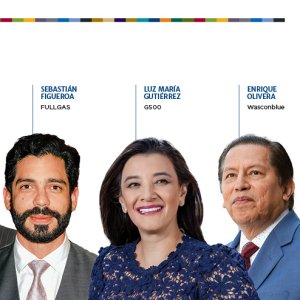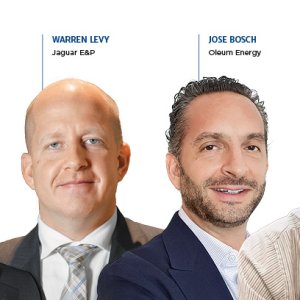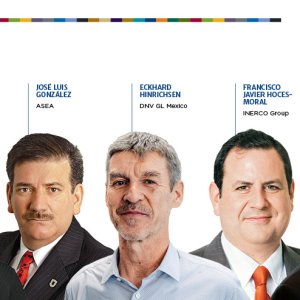
Round One - L2&3: Shallow Water Production & Onshore Fields
Moderator: Claudio De La Cerda, Chief Operating Officer of Jaguar E&P
Panelist: Fabio Ortega, Director of Ecopetrol Mexico
Panelist: Marco Antonio Cota, Director General of Exploration and Extraction at the Ministry of Energy
Panelist: Jaime Martínez, Business Development Director of ERM
Panelist: Alberto Ochoa, Engineering Manager at Grupo Diavaz
The panel on shallow waters and onshore production began with a question on how to achieve the goal of producing an additional 500,000b/d. Fabio Ortega from Ecopetrol said the goal was established before the price of oil dropped, thus is no longer a realistic target but rather a reference. As a second point, he said competition is fierce at the moment and Mexico, as many other countries, is competing for capital. However, companies are meticulously examining their options.
Ortega commented about the reforms that opened the oil and gas sector in Colombia a few years back. He said these, indeed, helped increase production, but this took four years. In his view, the shift in production happened because Colombia implemented rather simple contractual and regulatory models. The type of reform also allowed the entry of new players that greatly contributed to the increase in production. “Something we should not undermine,” he stressed, “is the participation of the NOC, which is responsible for 60% of the country’s production.” Ortega said the productive levels of Ecopetrol were also the result of the autonomy the company gained after the reforms. He finalized by saying that increasing production should always go hand-in-hand with finding prospective resources that can be exploitable throughout the duration of the contracts.
Claudio De La Cerda asked Alberto Ochoa from Grupo Diavaz about the characteristics of the companies participating in Phase 2 of Round One. Ochoa said the characteristics are stated in CNH’s guidelines, but he would add traits like having participated in analogous fields, skilled personnel, and environmental compliance. “Innovation is important under the current low-price environment. Also, unconventional resources make innovative companies stand out.” He concluded saying the characteristics are there and now the industry should apply the lessons learned from R1-L01 and promote participation, which depends on contractual terms.
De La Cerda addressed Rodrigo Hernández to ask him about the necessary steps to attract companies to R1-L03. The member of the Ministry of Energy confidently said the requirements for L-03 would differ from those in the two previous rounds. “The third phase consists of smaller fields that were left aside because PEMEX needed larger fields to meet its production goals,” he said, adding that their size do not make these fields lees interesting for other types of companies. Hernández mentioned that the authorities might offer the license model for the third round because production-sharing contracts could result in less efficient participation or complicates operations. He also stressed that in the criteria for the onshore round will be different than in the previous rounds, as the authorities will focus on the experience of people comprising the company rather than the company’s capabilities. “This is the path to develop a market of Mexican operators,” he explained.
To conclude, De La Cerda asked Jaime Martínez, from ERM, what are the main social, safety, and environmental aspects operators should anticipate. Martínez began by pointing out that the best way to deal with social matters is to anticipate them. “There is available information that can give us an insight on the social context of several areas, so I suggest establishing contact and involving the communities at the earliest stages.” As for safety, he mentioned the fatal accidents the industry has witnessed this year both in PEMEX and in platforms in the US. “In Mexico we do not have an optimal performance in terms of safety, an area that entails high costs. Regardless of how much companies we spend, the safety performance is still not optimal, and low oil prices might tempt companies to cut budgets for safety.” However, he sees opportunities to reduce costs and achieve better security performance in areas such as corporate culture, effective management systems, and adherence to procedures.














